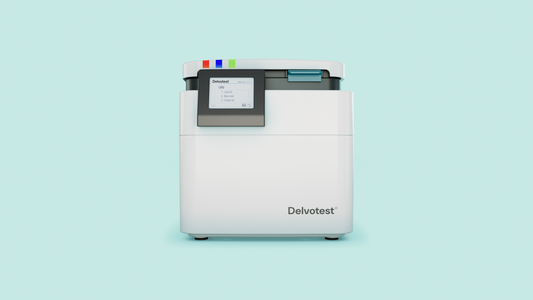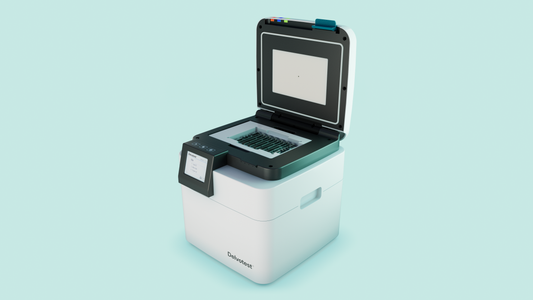


Ever wondered how a small test can guarantee that your milk is free from unsafe levels of antibiotics? Delvotest® is the dairy farmer’s go-to detective for just that, and it’s brilliantly straightforward. So straightforward, in fact, that the core biotech hasn’t needed much change since it was first developed by pioneering Dutch microbiologists in Delft fifty years ago. Here's the science, minus the jargon:
Inside each Delvotest, there’s a special kind of gel called the ‘agar’. This isn’t just any gel—it’s the playing field for a very special kind of bacteria, our Geobacillus stearothermophilus. These little guys love the heat, and they’re waiting for their moment to shine at 64°C ± 2°C.
Before these tests leave our factory, we seal them securely with aluminium foil. This keeps everything clean, preventing any contamination that could lead to incorrect results. Only the milk you add initiates the testing process.
When you pour in your milk, it doesn’t just mix with the agar; it stays on top. That’s because we’re focused on the small molecules—like antibiotic residues—that can diffuse down to where the bacteria are. The larger components in milk, like certain proteins and fats, stay on the surface, out of reach, so they don’t interfere with the test. But it’s important to note that the composition of the milk, such as in ewe’s milk versus cow’s milk, can affect the results. Other small molecules, like natural inhibitors, can also diffuse and potentially impact the test.
Now, we heat things up. If your milk is free of antibiotic residues at or above the detection levels, our bacteria start working. Through their metabolic activity, they produce acids that change the test colour due to a pH indicator in the agar. This colour change is the signal that your milk is safe and good to go.
If that colour doesn’t change, it's like a ‘red’ (purple!) flag. It means antibiotic residue are keeping our bacteria from doing their job. That purple colour staying put is your cue to check things out before that milk heads anywhere. However, properly understanding your Delvotest result isn't just about spotting a colour change—it's about when to look and what shade you see. It’s about colour change over time. Here’s how to nail it:
This is why getting ‘Control Time’ right and interpreting those subtle shifts from 'purple to yellow' can be tricky — precision is key, and when you're managing the non-stop bustle of a dairy farm, small uncertainties can lead to bigger doubts. Plus, at the end of the day, this is no trivial matter: it’s your money and reputation on the line. That's exactly why we designed the new Delvotest® Go as your go-to solution for safeguarding your milk. This sleek new device steps in to accurately determine and interpret your tests at the exact ‘Control Time’, effortlessly distinguishing ‘positive’ from ‘negative’ outcomes by analyzing the specific shade changes for you. It cuts through the guesswork, delivering clear results directly to you, no matter where you are. It's milk testing made effortlessly precise.
So, now that you’ve got the science down, it’s time to put it into practice. The smartest way to use this knowledge? By Testing Every Treated Animal (TETA). This isn’t just about following guidelines—it’s about taking control and ensuring your milk is always safe before it hits the bulk tank. With Delvotest® and TETA, you’re not just playing it safe; you’re playing to win. Ready to see how it all comes together? Check out our next Knowledge Centre article (Do you TETA? // Why Every Farm Should Test Every Treated Animal) and start putting this top-tier science to work for you on your farm today.
P.S. For the keen-eyed who noticed the headings were titles of famous songs … here’s the Spotify playlist 😉